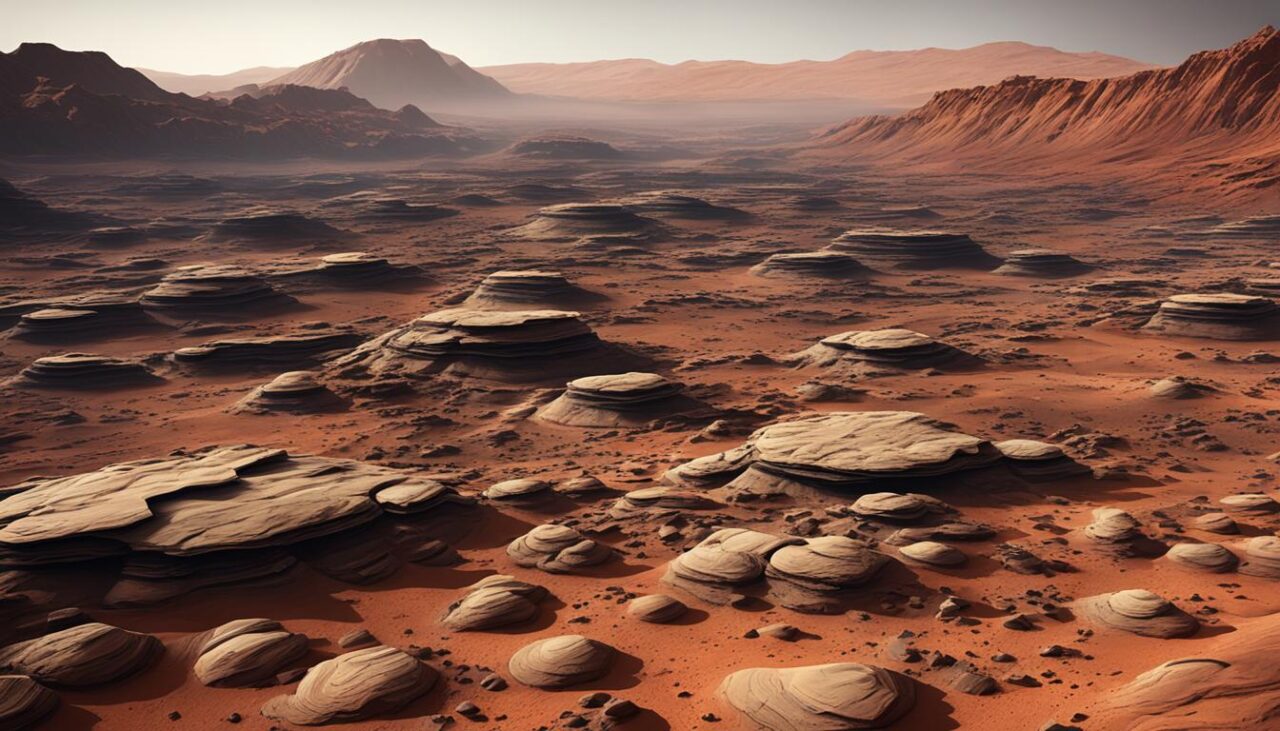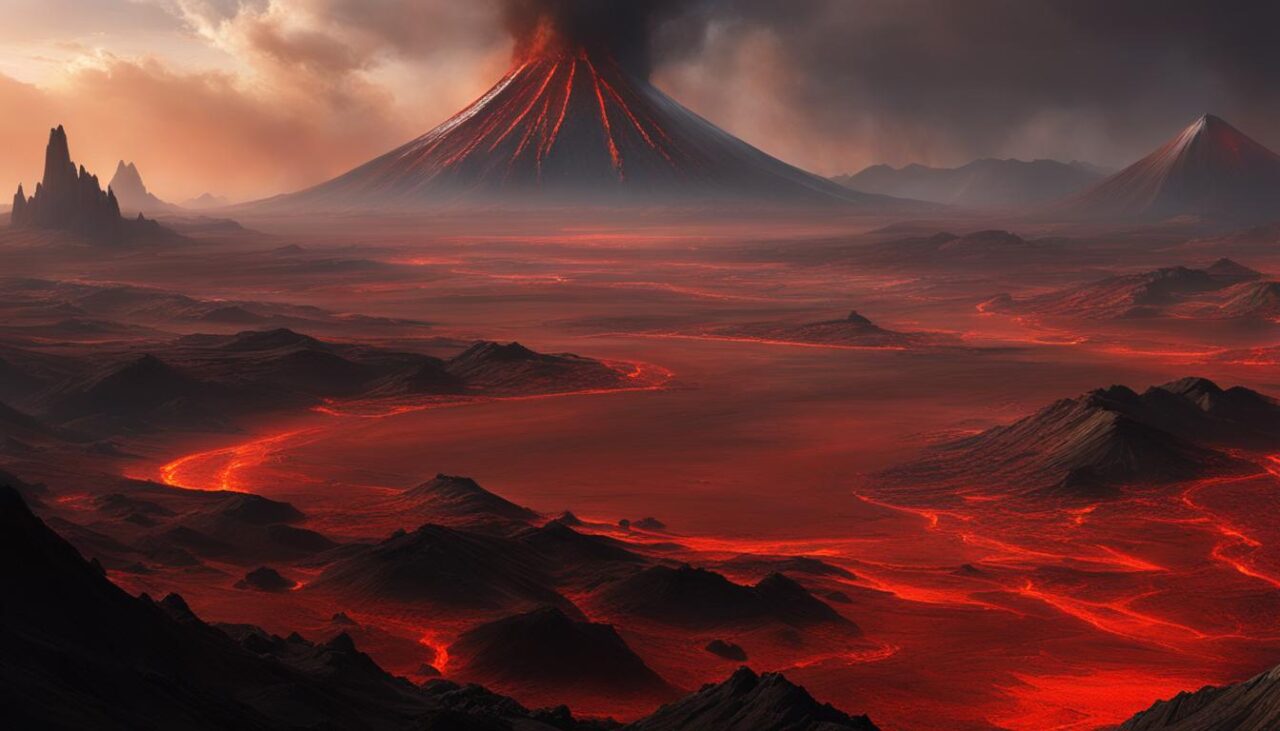Mars, also known as the Red Planet, has always been a source of fascination for scientists and space enthusiasts alike. With its unique geology and intriguing history, Mars offers a wealth of knowledge and understanding for those interested in planetary science. In this section, we will explore the fundamentals of Martian geology, including rock formations, volcanic activity, and ancient forces that have influenced the planet's geological history.
Key Takeaways
- Mars has unique geology that has piqued the interest of scientists and space enthusiasts.
- Understanding Martian geology can provide valuable insights into the planet's history and formation.
- Rock formations, volcanic activity, and ancient forces have all played a significant role in shaping Mars' geological landscape.
- Studying impact craters and sedimentary processes can help scientists better understand the timeline of Martian geological evolution.
- Mars continues to be a focus of space missions and ongoing research in planetary science.
Uncovering the Rock Formations of Mars
Mars is a planet marked by a unique geological history that is defined by its rock formations. Understanding these formations and the minerals that compose them is key to unraveling the Red Planet's mysteries and learning more about its geological processes.
One of the most prominent rock formations on Mars is the layered deposits of hydrated minerals found in the Valles Marineris. These formations hold significant information about the planet's past water activity and potential for habitability. Additionally, Mars's surface features, such as its canyons, mountains, and craters, are heavily influenced by its underlying rock formations and geological activity.
Through the study of Martian geology, scientists have found that the surface of the Red Planet is made up of basalt, a commonly found igneous rock, and other minerals such as hematite, olivine, and pyroxene. These minerals impact the surface features of the planet, and what's more, onething that makes Mars unique among the terrestrial planets is that some of its forms of basaltic rock formations arose after volcanic eruptions.
Exploration of Mars through rovers and landers has facilitated the mapping of the planet's geology with increasing precision. This has led to the identification of the planet's regions with specific minerals such as hematite in Meridiani Planum, pyroxene in Cornelia-Arrabida and olivine in Nili Fossae. The information gathered from these missions has opened up more avenues for research and helped scientists to develop new insights into the planet's geological history.
“By examining Martian rock formations, we can gather valuable information about the planet's geological history and the forces that shaped this intriguing world,” says Dr. Anna Johnson, a planetary scientist at the University of California, Los Angeles.

The mineral composition of rock formations on Mars provides crucial insights into the planet's past and present potential for life. These findings can help researchers form hypotheses about Mars's geological and astrobiological history. By studying Mars, scientists can also draw conclusions about the formation and evolution of the solar system and the potential habitability of planets beyond our own.
The Influence of Volcanic Activity on Martian Geology
Volcanic activity has significantly impacted Martian geology, shaping the planet's surface features and rock formations. Mars is home to some of the largest volcanic features in the solar system, including Olympus Mons, the largest known volcano in the solar system. Volcanic eruptions have contributed to the formation of vast lava fields, such as the Tharsis plateau, covering millions of square kilometers.
The volcanic activity on Mars is not limited to shield volcanoes like Olympus Mons, but also includes other types of volcanic features like cinder cones, lava tubes, and calderas. These volcanic features have had a profound effect on Martian geology, contributing to the formation of diverse rock formations and surface features.
Studying Martian volcanic activity provides insights into the planet's geological history. Scientists can analyze the mineral composition of the rocks created by volcanic activity to determine the conditions that existed at the time of their formation. The presence of volcanic activity on Mars suggests that the planet's interior is still active and that the planet has evolved over time due to geological processes, such as mantle convection and plate tectonics.

“Mars has an incredibly diverse and dynamic geologic history, driven in large part by its volcanic activity.” – Dr. Michael Meyer, lead scientist of the Mars Exploration Program
The Role of Volcanic Activity in Martian Habitability
Volcanic activity has played a significant role in the habitability of Mars throughout its history. The volcanic activity may have contributed to the presence of water on Mars, which is essential for the development of life. Scientists believe that volcanic activity on Mars may have provided the necessary conditions for life to develop in the past.
Furthermore, volcanic activity may have contributed to the formation of subsurface habitats on Mars, where microbial life could potentially exist. Volcanism is known to provide energy and nutrients for microbial communities on Earth, suggesting that similar ecosystems may exist on Mars.
Overall, the study of volcanic activity on Mars provides valuable insights into the planet's geological history and habitability potential. Further research into Martian geology and volcanic activity is necessary to gain a better understanding of this dynamic world beyond our own.
Tracing Martian Geological History through Impact Craters and Sedimentary Processes
To unravel the geological history of Mars, scientists turn to impact craters and sedimentary processes. Impact craters are the most common geological feature on Mars and record the history of an impact event. Each impactor leaves a characteristic “fingerprint” on the Martian surface.
By analyzing the morphology of the impacts, scientists can determine the direction of the impactor's trajectory and the energy involved in the collision. They can also deduce the impactor's size, composition, and the nature of the target material.
Sedimentary processes provide another window into Martian geological history. Martian sedimentary rocks are relatively young, dating back to the Hesperian period, roughly 3.7-2.5 billion years ago. These rocks provide important details on the environmental conditions that existed on Mars during this period.
Mars' geological history, as recorded in sedimentary rocks and impact craters, is complex and fascinating. By studying these features, scientists can piece together the sequence of events that have shaped the planet's evolution.
Conclusion
The study of Martian geology has been a topic of interest for planetary scientists and space agencies for several decades. The exploration of the Red Planet through space missions and ongoing research in planetary science has provided us with remarkable insights into its geological evolution.
Through the study of Martian geology, we have gained knowledge about the unique rock formations, volcanic activity, and ancient forces that have shaped the planet's surface. This understanding has helped us to reconstruct the timeline of Martian geological history, providing us with insights into the potential for past habitability on the planet.
As space missions to Mars continue, the exploration of Martian geology remains a fascinating area of study. With each new discovery, we expand our knowledge of this fascinating world beyond our own, and we gain a better understanding of our place in the universe.
Planetary science and space missions will continue to play a crucial role in deciphering Martian geology, and the insights gained from studying this field will undoubtedly provide us with valuable information to help answer some of the most profound questions of our time.







